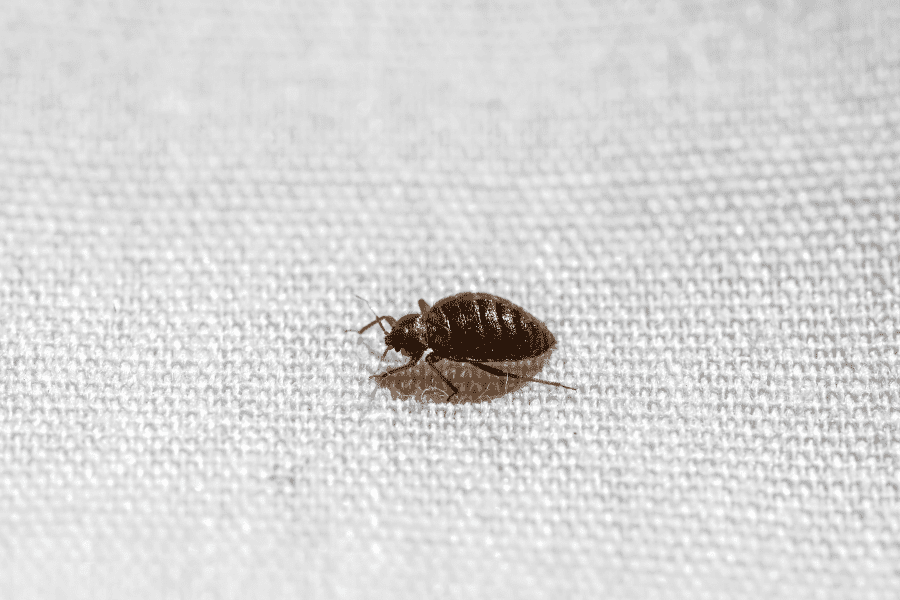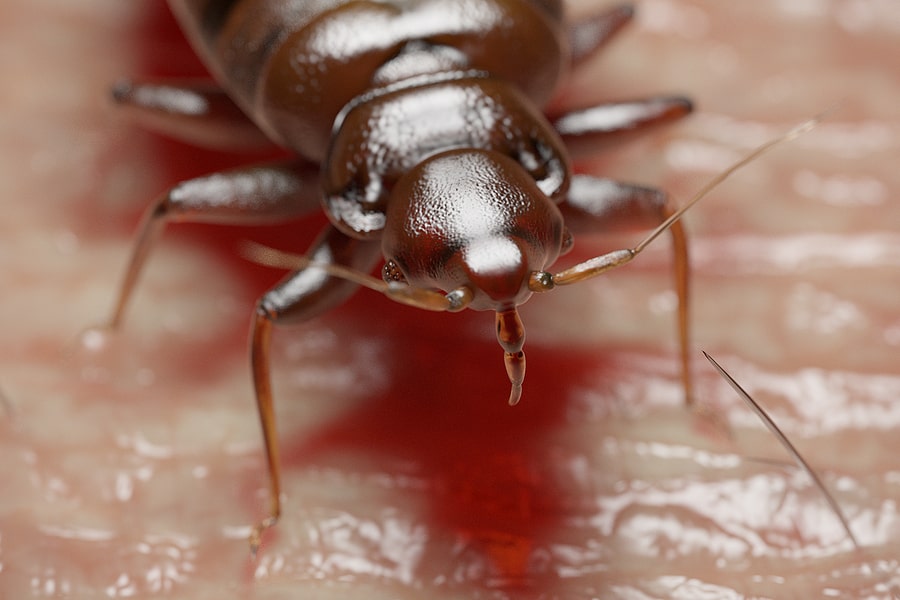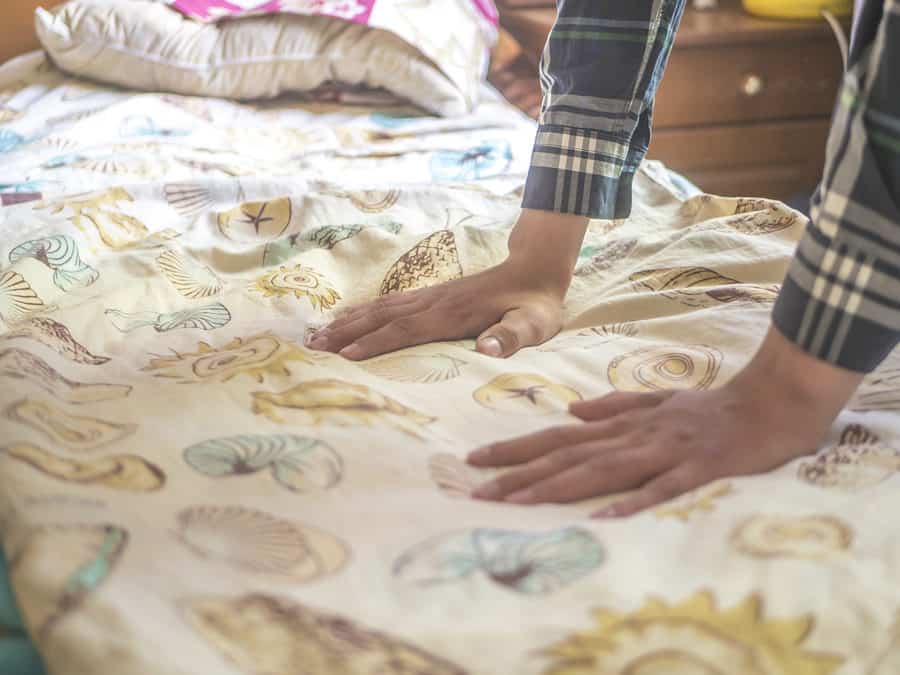READY TO GET STARTED?
REQUEST A FREE ESTIMATE
Fill out the form below or call (888) 466-7849 for a free, no-obligation estimate.

The new year is here and it’s time to get your vacations planned for the upcoming months. Don’t let those vacation plans get ruined by bed bugs! These pests are highly efficient hitchhikers and can move quickly and climb easily into luggage or anything left on a bed in just one night. Hotels and Airbnb’s are the perfect home for bed bugs and are typically where they can be picked up. Here are some tips to prevent bed bugs while traveling!
Once arriving at your home away from home during your vacation, be sure to inspect anything and everything where a bed bug could be hiding. Look for live insects, blood stains, and eggs throughout the room. Typically, with larger infestations, you will notice a sweet, musty odor.
The best place to inspect is the mattress you will be sleeping on. Be sure to take the fitted sheet off the corner of the bed, lift the mattress, and check all the crevices with a flashlight. Other hiding places include baseboards, behind picture frames, and even cracked or ripped wallpaper.
Before using the luggage rack, which you should always use, inspect it for bed bugs. Once cleared, you should then use the rack to keep your luggage elevated off the ground. Keep the rack away from the wall so bed bugs can’t easily climb into your bag.
When beginning to pack for check out, examine your luggage and clothing to make sure you haven’t picked up any extra baggage. A good tip to know is once home, unpack in your garage or outside of your living areas, and put clothes directly in the dryer, as heat is a deterrent for bed bugs.
If you suspect you have returned home from vacation with hitchhikers, reach out to your local, licensed pest control company and receive a FREE bed bug inspection today!

Our summer travels will soon end and the start of the school season begins for many families. As our travel season slows down, that doesn’t mean bed bug season will end anytime soon. Bed bugs are active year-round and they’re always looking for an opportunity to hitchhike into homes! It’s essential to know how bed bugs enter homes to help prevent and treat them before an infestation occurs.
Traveling season is the perfect time for bed bugs to make their way into your home. Bed bugs are notorious for latching on to bags, purses, luggage, and even wheelchairs. Before entering your home after travel, unpack your luggage outside instead of bringing it inside. Take all your clothes and wash them immediately, making sure to run them through a high-heat dryer cycle. The high heat helps to kill bed bugs as they cannot withstand high temperatures.
Before storing your suitcases, vacuum them out and leave them outside of your house. Consider storing them in outside places such as in a garage or storage closet. An alternative option is to seal suitcases in large plastic storage bags before bringing them in.
Another common, lesser-known way bed bugs can enter homes is through second-hand furniture that is already infested. Before purchasing, make sure to inspect used couches, mattresses, or box-springs for these pests.
If a bed bug infestation occurs, it can often require a very intense treatment to eliminate them. If you suspect that you have bed bugs, call your licensed pest control company as soon as possible. They will provide you with the best treatment plan and give recommendations to prevent future infestations.

Traveling can be stressful. The last thing anyone wants to deal with on top of the routine stress of traveling is bed bugs. These pests are notorious hitchhikers and often catch rides with travelers on their luggage to move from place to place. How can you eliminate the potential for bed bugs while traveling? Here is our traveler’s guide to bed bugs to help make your trip as smooth and bed bug free as possible.
Properly identifying bed bugs is the first step to preventing an infestation. There are other common bugs that are often mistaken for bed bugs like carpet beetles, spider beetles, bat bugs, booklice, and fleas. Bed bugs are small, about 3/16″ to 1/4″ in length (about the size of an apple seed). If they have not fed recently, they are long and brown with a flat, oval-shaped body. If they have recently had a meal, they will be balloon-like and elongated with a reddish-brown color. They are “true bugs” with a 3-segmented beak, antenna with 4 parts, wings that aren’t used for flying, and short, golden-colored hairs. They also have an odor which is often described as sweetish or musty. Bed bug nymphs are smaller, translucent, and whitish-yellow in color. Bed bug eggs are tiny, about the size of a pinhead and are pearl white in color.
The next step in bed bug prevention is recognizing the signs of the presence of bed bugs. You should look for signs of bed bugs any time you are cleaning, changing bed linens, or inspecting the area where you are staying on a trip. Signs of bed bugs include rusty, reddish-brown stains on the bed sheets or mattress that happen when bed bugs are crushed; dark spots about the size of a period that are bed bug excrement that bleeds onto bed linens; eggs and eggshells that are tiny (about 1 mm in size); pale yellow skins that are shed by the nymphs; and live bed bugs. Any of these signs indicate the presence of bed bugs.
Bed bugs are tiny pests that can fit into a crack or crevice the size of a credit card. Knowing where bed bugs can hide is the next step to avoiding them. When checking for bed bugs, thoroughly inspect the piping, seams, and tags of mattresses and box springs; cracks in the bed frame and headboard; seams of chairs and couches; between cushions; in the folds of curtains; in drawer joints; in electrical receptacles and appliances; under loose wallpaper and wall hangings; where the wall and the ceiling meet; along baseboard seams and cracks; and in the head of screws.
Knowing how bed bugs act is essential to finding, eliminating, and preventing them. Bed bugs prefer to feed on humans but will also feed on other mammals and even birds. They will travel anywhere from 5 to 20 feet from their hiding spots to feed on a host. They are primarily nocturnal but will seek a host during daylight in larger infestations. They will feed on a host anywhere from 3 to 12 minutes. Bed bugs need at least 1 blood meal to be able to develop into the next stage of their life cycle. In order to continue to mate and produce eggs, both male and female bed bugs must feed at least once every 14 days. Females lay anywhere from 1 to 3 eggs per day and 200 to 500 eggs in their lifetime. They can survive temperatures as low as 46 degrees Fahrenheit but will die when their body temperature reaches 113 degrees Fahrenheit; hence the use of heat in bed bug treatments. Bed bugs can be found anywhere their hosts can be found.
Now that you know what bed bugs look like, where to find them, and how they act, the final step is how to prevent them. This is especially important when you are traveling. The first step is to check the bed bug registry to make sure the place you are staying doesn’t have any recently reported cases of bed bugs. Anytime you are staying outside your home, inspect the room where you are staying thoroughly for the presence of bed bugs. Use a flashlight and pull the sheet back to get a closer look. Inspect all of the areas listed above where bed bugs can hide. Use luggage racks to store your suitcases and bags and try to avoid putting them on the bed or the floor. Keep your belongings stored separately from those of the others you may be staying with. Consider storing your luggage in trash bags or protective coverings during your stay. If you find signs of bed bugs where you are staying, request to change rooms. If you must change rooms, do not move into a room that is adjacent to or directly above or below the infested room. When you return home from your trip, unpack your luggage directly into your washing machine and wash and dry everything on high heat. Inspect your luggage for bed bugs and use a vacuum or hand steamer to clean it before storing it. Keep luggage stored away from your bedroom, possibly in the basement or garage. Never store luggage under your bed.
With this traveler’s guide to bed bugs you will be well equipped for your next trip. If you suspect you have a bed bug infestation, contact a professional pest control company who can provide a thorough inspection and bed bug control service.
What You Should Know About Flies!
The Essentials of Crawlspace Moisture Barriers
I’ve Taken Precautions, But I’m Still Seeing Roaches!

This is the biggest time of year for travel! While remembering to pack the perfect outfit or the kids’ favorite game may be on the top of your growing to-do list, something you may not be thinking about is preventing a bed bug infestation from following you back home. This should move towards the top of the list, however, as a bed bug infestation is difficult to treat. Here are a few places where bed bugs are found:
Double checking your belongings when you arrive home can help prevent the establishment of a bed bug haven. Be sure to check out these other ways to prevent bed bugs. If you believe you have a bed bug infestation, it is imperative to call a professional bed bug control company immediately.